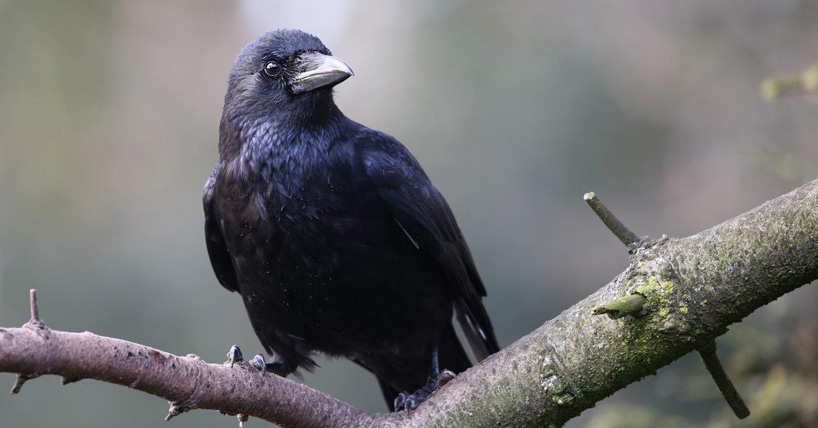Farmland birds
The 'value' of biodiversity
Published on: 3 May 2018
Why conservation policies which value species based on their ‘usefulness’ are putting birds like the humble crow at risk.
Putting policies in place that are designed to protect biodiversity but are based on only one key species ‘value’ could inadvertently put some of our best loved wildlife in jeopardy, new research has shown.
The study, published today in Scientific Reports, highlights the consequences of focussing on key specific conservation triggers such as the rarity of a species or its financial impact – for example the amount of weed seeds (which impact on crops) eaten by birds – without also looking at the wider, cultural value of a species and its importance to society.
Led by an international team of experts from Newcastle University, UK, the Swedish University of Agricultural Sciences and the British Trust for Ornithology, the research categorised UK farmland birds according to three core values – conservation priority value (measured in two ways by rarity and population decline magnitude), economic value (consumers of weed-seeds) and cultural value, measured through poetry.
They found that each ‘value’ prioritised different subsets of species and taking any one in isolation could potentially underestimate the importance of a species.

Skewed picture
Senior author Mark Whittingham, Professor of Applied Ecology at Newcastle University, explained:
“Considering one value in isolation gives you a very skewed picture of what’s important and what isn’t.
“Birds such as the chaffinch might consume large numbers of weed seeds which helps farmers, but they aren’t rare and compared to other species they barely feature in poetry.
“Conversely, the crow isn’t rare and isn’t particularly useful for eating weed seeds but we found it features frequently in poems down the ages which suggests it is intrinsically linked with society and culture. The question is how you put a ‘value’ on this.”
Useful vs non-useful
Habitats and species are being lost at a devastating rate and the predicted impacts on all aspects of human well-being are profound.
With approximately 1.7 Million species described on Earth the knowledge about many of them is relatively limited (e.g. only c85,000 have been evaluated on the IUCN Red List of Threatened Species). Therefore the prioritisation of conservation efforts has become a key focus for policy-makers around the world.
Analysing 38 species of farmland bird – all of which breed in the UK – the team scored them according to the three key values; conservation priority, economic value and cultural value. Using poetry as an indicator of the cultural value of this set of birds over a long time span, the team analysed the number of mentions of each species in a poem, taken from a database of over a million poems.
They found that by focusing singularly on rarity or extent of decline (common features of conservation schemes), weed seed predation or poetry only a small subset of species was important for each value. However, a larger proportion of the 38 species were important when contribution to all three types of values was considered simultaneously.
Professor Whittingham says that although this study only looks at a small selection of the potential ways individual species can be valued for different purposes, based on the evidence the more values that are considered the more species are likely to be important.
“Prioritisation makes sense when you have scarce resources but there is an inherent danger that by going down that route we take our eye off those species that are just as valuable to us but in less tangible ways.
“What we have demonstrated is that the more ‘values’ you take into account the more you realise that every species is important and has a part to play and so we need to be considering this in our policies and strategies for natural resource management and future planning.”
The top 5 most ‘valued’ species in poetry:
1 – Crow
2 – Woodpigeon
3 – Doves (including Stock and Turtle Doves)
4 – Sparrow (including House and Tree Sparrow)
5 – Swallow
The top 5 most ‘valued’ species by rarity
1 – Stone curlew
2 – Quail
3 – Cirl Bunting
4 – Corncrake
5 – Corn Bunting
The top 5 most ‘valued’ species by population decline
1 – Turtle Dove
2 – Grey Partridge
3 – Whinchat
4 – Starling
5 - Curlew
The top 5 most ‘valued’ species based on economic impact (based on winter population data)
1 – Chaffinch
2 – Grey Partridge
3 – Skylark
4 – Stock Dove
5 – Linnet
The top 5 most ‘valued’ species based on economic impact (based on summer population data)
1 – Chaffinch
2 – House Sparrow
3 – Red-legged Partridge
4 – Skylark
5 – Stock Dove




